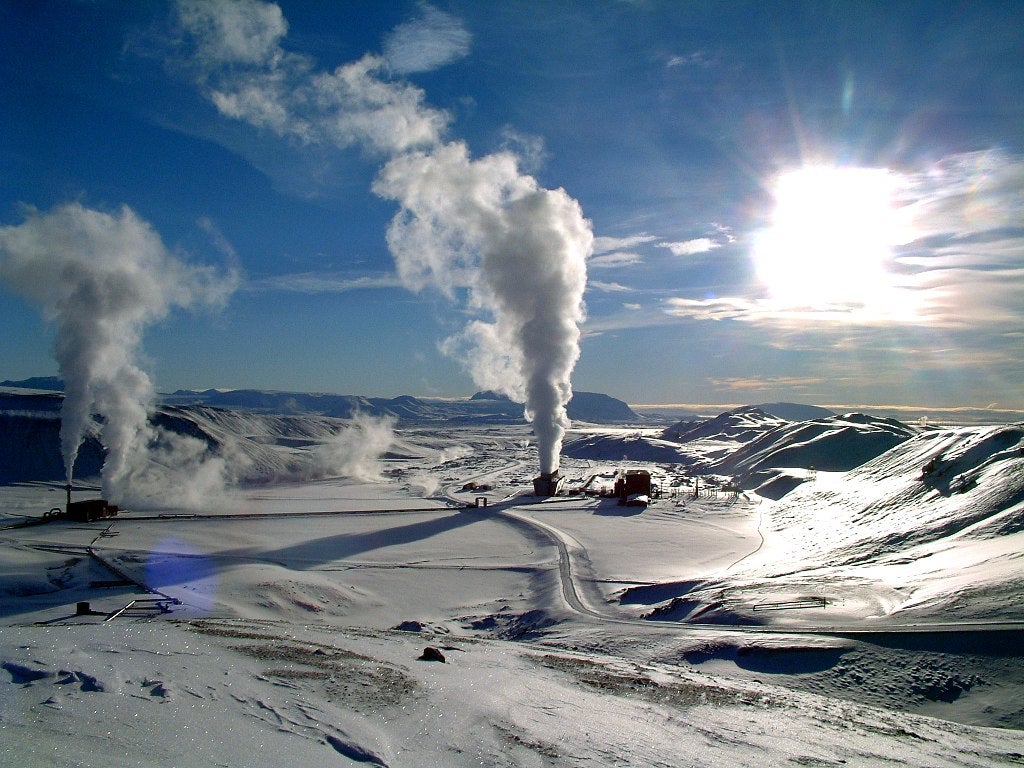
The two oil majors headlined the funding round into the company’s Eavor-Loop technology, which uses the natural heat of the earth to provide a constant flow of energy.
As part of Eavor’s geothermal method, fluids are heated by the earth and circulated in a closed network of underground wellbores, typically 3km to 4km below the earth’s surface to harness the natural energy source.
Liquid travels in the pipes, installed via advanced drilling techniques from the oil sector, from the aboveground facility, through the hot underground environment, before returning to the top of the loop. The hot liquid is then converted into electricity or transferred to a district heat grid.
Relying on this concept, Eavor says its geothermal technology is scalable because it can “go anywhere” to generate dispatchable power with zero carbon emissions. Its energy storage capability is also expected to be complementary to less stable renewable sources like wind and solar.
BP senior vice president of zero-carbon energy Felipe Arbelaez said: “We see Eavor’s potential to be complementary to our growing wind and solar portfolios. Technologies such as Eavor’s have the potential to deliver geothermal power and heat and help unlock a low carbon future.”
In addition to Eavor-Loop’s environmental benefits, the consistency of its heat harvesting gives it the potential to replace traditional forms of baseload power such as coal and nuclear.
The investment marks a key move into geothermal, which is slowly growing in prominence. It is BP’s first investment into geothermal energy and re-entry for Chevron after the company sold its geothermal assets in 2016.
The investments, and the partnerships formed around them, are expected to aid the commercialisation of the technology and help Eavor scale its extensive project pipeline.
Eavor Technologies president and CEO John Redfern said: “I am delighted that with the funding closed in this round we can look forward to bringing down the cost of clean, dispatchable power to a universally competitive level, an important milestone for renewable energy.
“The involvement of companies such as BP and Chevron represents a fantastic endorsement of our technology, the progress we have made to date, and the promise for its global scalability.”
Investors in this round also included: Temasek, BDC Capital, Eversource, and Vickers Venture Partners.
Eavor has previously been funded by angel investment and venture capital.
The potential of geothermal energy
Geothermal energy is widely used by countries like El Salvador, New Zealand, Kenya, and the Philippines; it also meets about 90% of Iceland’s heating demand.
The main advantage of geothermal is that it is not dependent on weather conditions and has very high capacity factors, therefore geothermal plants are capable of supplying baseload electricity, as well as ancillary services for short and long-term flexibility.
While geothermal can be used for heating and cooling purposes or be harnessed to generate clean electricity, appropriate temperature resources required are usually located close to tectonically active regions, which pose dangers.
Another possible impediment is the high initial cost for individual households as drilling and installing a complex system into one’s home makes for high prices.
A potential non-depletable option that could increase the method’s scalability in the future is sourcing geothermal energy from magma, which could be a reliable source for many years.
However, such elaborate technologies are still in the process of research and development.



